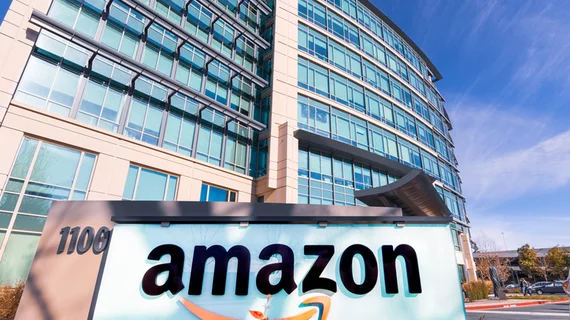The spectacular failure of Amazon’s Haven Healthcare and 4 key takeaways for radiology
The recent failure of Amazon’s Haven Healthcare venture may offer some key lessons for radiologists, experts charged on Thursday.
The Seattle-based tech giant first announced the endeavor in 2018 to much fanfare, with some dubbing Haven as a “disruptive force that will drive widespread change throughout the industry.” Yet a few years later, Haven ceased operations for complex reasons that weren’t easy for outsiders to discern.
Indiana University imaging experts see an opportunity for the specialty to learn from Haven’s downfall, they wrote in Academic Radiology.
“Failure is a rich but often underutilized source of insight, whose lessons should not be lost on radiology learners,” Richard Gunderman, MD, PhD, and Joseph Acchiardo, both with the Indianapolis institution’s Department of Radiology, explained April 22. “How could a widely touted organization with such an impressive pedigree and resources collapse in the space of three years?”
The two authors broke down Haven’s demise into four lessons for radiology learners:
1. Defining a clear mission: Setting out with lofty goals may have made it difficult for the company to define its short-term aspirations. Members of the specialty require a North Star to guide their careers.
“Radiology learners need to be clear on their mission. While it makes good marketing copy, a mission to ‘transform radiology practice worldwide” is almost certainly too vague and bloated,’ the authors charged.
2. Matching capability to need: While Amazon lined up a cadre of respected names, including selecting noted surgeon Atul Gawande as CEO, the company lacked leverage. As a new entrant hoping to make bold changes, the company “simply was not large enough,” never growing beyond 75 employees.
“To be able to negotiate for changes in the way healthcare is organized or lower prices, you need bargaining power, and consolidation in healthcare has made it increasingly difficult for a venture of Haven's modest size to negotiate effectively,” the authors wrote.
3. Coordinating heterogeneous constituencies: Part of Haven’s pitch was to leverage data and better understand costs. But it struggled to even collaborate on info among its three parent companies—which also included Berkshire Hathaway and JPMorgan Chase—and could not convince providers and insurers to do the same. Plus, the companies may have been too different to coalesce around their mission.
“Large collections of data can be good, but data alone are not enough. Simply knowing what different companies are paying for different services does not necessarily reveal where opportunities lie and why,” Acchiardo and Gunderman noted. “No matter how much information a new venture can aggregate and analyze, it still needs experienced and creative people who really understand what is happening in the business environment.”
4. Attracting and retaining appropriate leadership: Amazon and its partners may have taken the wrong approach to tapping leaders, in the writers’ opinions. Those involved held an essay contest and interviewed about how they would fix the healthcare system. And while Gawande is a skilled writer and visionary thinker, he had never run a large healthcare venture. Other notable leaders later followed in his steps.
“Understanding the role that Haven's poorly defined mission, lack of market clout, insufficient cohesion, and ill-prepared leadership played in its failure can help radiology learners avoid similar mistakes,” the piece concluded. “Taken together, perhaps the greatest lesson concerns the hazards of hubris. The company and those watching it thought that, because of all the star power assembled in the new venture, it had to succeed. But talking and executing a good game are two very different things.”
You can read the entire opinion piece in Academic Radiology here.

